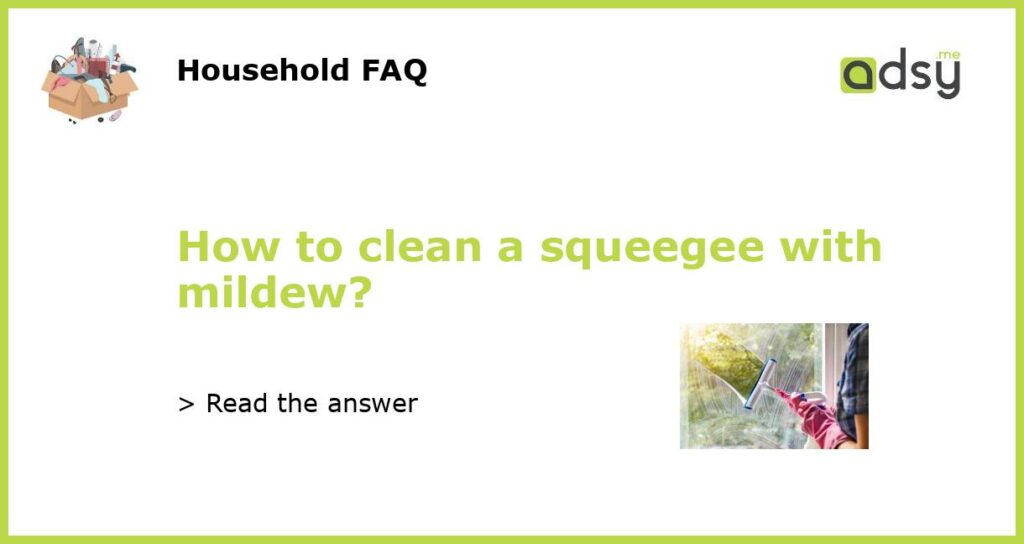Understanding the Problem of Mildew on Squeegees
Mildew is a common problem that can occur on squeegees, especially if they are not properly cleaned and stored after use. Mildew is a type of fungus that thrives in warm and damp environments. When left untreated, mildew can cause discoloration, bad odor, and even health issues. Therefore, it is important to know how to clean a squeegee with mildew to maintain its effectiveness and prolong its lifespan.
Gathering the Necessary Supplies
Before starting the cleaning process, gather the necessary supplies. This will ensure that you have everything you need at hand and save you time and effort. Here are the supplies you will need:
- Warm water
- Vinegar
- Dish soap
- Bucket or sink
- Scrub brush or sponge
- Optional: bleach or hydrogen peroxide (for stubborn stains)
- Towel or cloth for drying
Cleaning the Squeegee
Now that you have everything ready, it’s time to start cleaning the squeegee. Follow these steps:
- Fill a bucket or sink with warm water and add a small amount of dish soap. Mix well to create a soapy solution.
- Submerge the squeegee in the soapy solution and let it soak for a few minutes. This will help loosen any dirt, debris, and mildew.
- Using a scrub brush or sponge, gently scrub the squeegee to remove the loosened dirt and mildew. Pay special attention to the rubber blade and handle, as these areas are more prone to harboring mildew.
- If the mildew stains are stubborn and not coming off easily, you can use a mixture of vinegar and water. Mix equal parts vinegar and water in a spray bottle and spray it onto the affected areas. Let it sit for a few minutes before scrubbing.
- Rinse the squeegee thoroughly with clean water to remove any soap or vinegar residue.
- If necessary, you can use bleach or hydrogen peroxide to sanitize the squeegee. Be sure to follow the instructions on the product and take necessary precautions.
- Once the squeegee is clean, dry it thoroughly with a towel or cloth to prevent the growth of additional mildew.
Preventing Future Mildew Growth
Cleaning the squeegee is only the first step. To prevent future mildew growth, it is important to establish proper cleaning and storage habits:
- After each use, rinse the squeegee with clean water to remove any excess dirt and debris.
- Shake off any excess water and hang the squeegee to dry in a well-ventilated area.
- Avoid storing the squeegee in damp or humid areas, as this can promote mildew growth. Instead, store it in a dry place or use a squeegee holder.
- Regularly inspect the squeegee for any signs of mildew and clean it as soon as you notice any growth.
- Consider using a squeegee cleaner or disinfectant spray specifically designed to prevent mildew growth.
Conclusion
Cleaning a squeegee with mildew is essential for maintaining its effectiveness and preventing health issues. By understanding the problem, gathering the necessary supplies, following the cleaning steps, and establishing proper cleaning and storage habits, you can keep your squeegee clean and free from mildew. Remember to regularly inspect and clean your squeegee to ensure its longevity and effectiveness.






